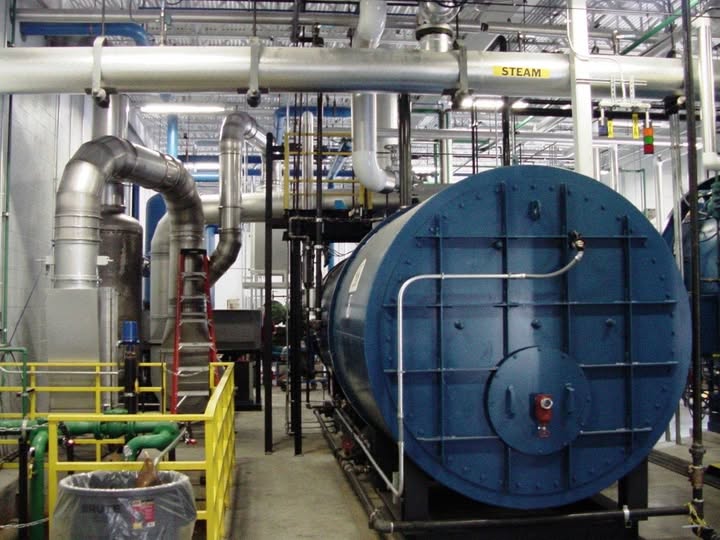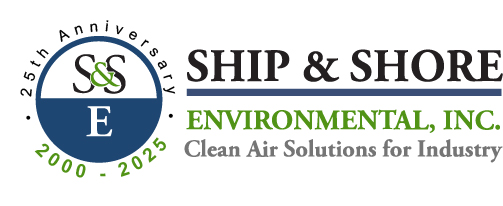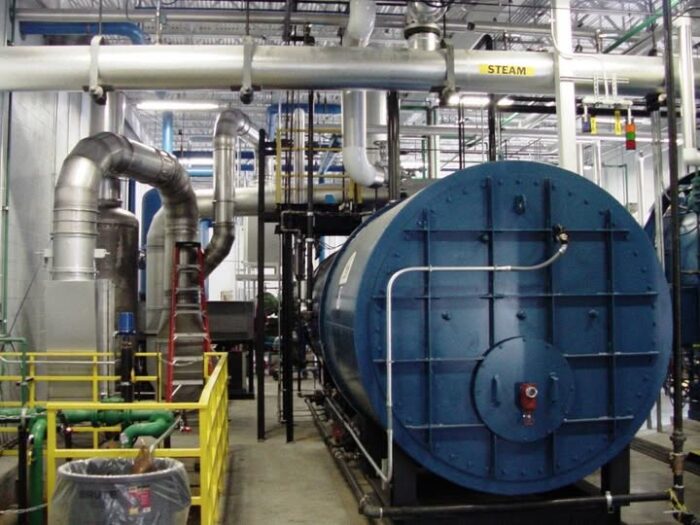
#TechTalk: Understanding Boilers & Pollution Abatement
November 12, 2025 8:24 am#TechTalk: Understanding Boilers & Pollution Abatement
November 12, 2025
Boilers are the powerhouse of modern industry, converting fuel energy into steam that drives production, sterilization, heating, and countless other operations. A boiler is a pressurized vessel that generates steam through heat transfer, serving vital roles across hospitals, universities, food processing facilities, and manufacturing plants where consistent steam output is essential.
Types of Boilers
Boilers are generally classified into two main types:
- Firetube Boilers: Hot gases pass through tubes surrounded by water, transferring heat to produce steam. This design is durable, compact, and ideal for moderate pressure applications.
- Watertube Boilers: Water flows inside tubes that are externally heated by combustion gases. These units operate at higher pressures, generate steam more rapidly, and are suited for large-scale industrial use.
Boilers and VOC Destruction
Because boilers operate at temperatures often above 1,450°F, they may seem capable of destroying volatile organic compounds (VOCs). In practice, however, their primary function is steam generation, and fluctuating heat levels make it difficult to maintain the steady high temperatures required for consistent VOC destruction.
Key Operational Constraints
- Combustion Air vs. Process Flow: VOC-laden air must be routed through the burner’s combustion air system. The process flow cannot exceed the maximum air capacity of the burner, or complete combustion cannot occur.
- Furnace Volume & Retention Time: To achieve proper destruction, gases must remain at ≥1450°F for at least 0.5 seconds. Smaller furnaces often fail to provide this residence time.
- Variable Steam Demand: When steam demand drops, furnace temperature falls below destruction thresholds, reducing efficiency and compliance with air quality standards.
Meeting Compliance
To meet regulatory requirements, a boiler system would need to:
- Match combustion air to or exceed VOC process flow.
- Maintain furnace volume sufficient for the required retention time.
- Operate consistently at or above 1450°F.
- Run continuously at full capacity, independent of steam demand.
The Bottom Line
While boilers can reach VOC destruction temperatures, maintaining those conditions under normal operation is extremely challenging. Boilers are not designed for pollution abatement, and using them as such can compromise both performance and compliance.
At Ship & Shore Environmental, Inc., we design advanced pollution control systems that work alongside existing combustion equipment, ensuring maximum emission reduction and energy efficiency. By merging engineering precision with environmental responsibility, we help industries transform their heat into harmony—achieving cleaner air without sacrificing productivity.
📞 Contact us at +1 (562) 997-0233
📧 Email: service@shipandshore.com
Categorised in: #CleanAirSolutions, #MadeInAmerica, #VOC Control, 25Years of S&SE, Ship & Shore, Technical, TechTalk, ThermalOxidizer, VOC Abatement


